
Henrico County, officially the County of Henrico, is a county located in the Commonwealth of Virginia in the United States. As of the 2020 census, the population was 334,389 making it the fifth-most populous county in Virginia. Henrico County is included in the Greater Richmond Region. There is no incorporated community within Henrico County; therefore, there is no incorporated county seat either. Laurel, an unincorporated CDP, serves this function.
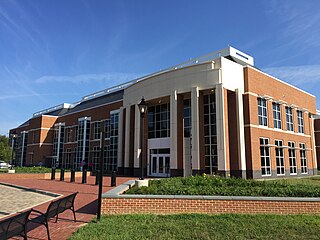
Hanover County is a county in the Commonwealth of Virginia. As of the 2020 census, the population was 109,979. Its county seat is Hanover.

Chesterfield County is a county located just south of Richmond in the Commonwealth of Virginia. The county's borders are primarily defined by the James River to the north and the Appomattox River to the south. Its county seat is Chesterfield Court House.

Charles City County is a county located in the U.S. commonwealth of Virginia. The county is situated southeast of Richmond and west of Jamestown. It is bounded on the south by the James River and on the east by the Chickahominy River.

Amelia County is a county located just southwest of Richmond in the Commonwealth of Virginia, United States. The county is located in Central Virginia and is included in the Greater Richmond Region. Its county seat is Amelia Court House.

James Hoge Tyler was a Confederate soldier, writer and political figure. He served in the Virginia Senate and became the 16th Lieutenant Governor of Virginia and the 43rd Governor of Virginia. He compiled The Family of Hoge, published posthumously in 1927.
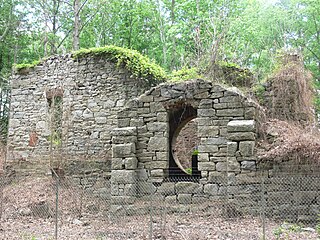
Midlothian is an unincorporated area and census-designated place in Chesterfield County, Virginia, U.S. Settled as a coal town, Midlothian village experienced suburbanization effects and is now part of the western suburbs of Richmond, Virginia south of the James River in the Greater Richmond Region. Because of its unincorporated status, Midlothian has no formal government, and the name is used to represent the original small Village of Midlothian and a vast expanse of Chesterfield County in the northwest portion of Southside Richmond served by the Midlothian post office.
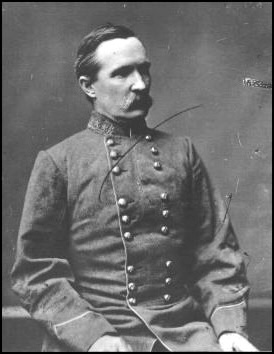
Henry Heth was a career United States Army officer who became a Confederate general in the American Civil War.

John Daniel Imboden, American lawyer, Virginia state legislator, and a Confederate army general. During the American Civil War, he commanded an irregular cavalry force. After the war, he resumed practicing law, became a writer, and was active in land development founding the town of Damascus, Virginia.
Nicholas Mills Sr. was a prominent businessman in Richmond, Virginia. He built a 13 mile tramway known as the Chesterfield Railroad Company(forerunner of Virginia's first railways) to connect the coal pits of Chesterfield County to the James River. A staunch Unionist, over his house flew the last Union flag in Richmond, April 1861. He was at one time the owner of the Chesterfield Coal Pits and president of the Tredegar Iron Works. When he died in 1862 he is reported to have had $800,000 in gold stored in his vault, probably making him the wealthiest man in Virginia.
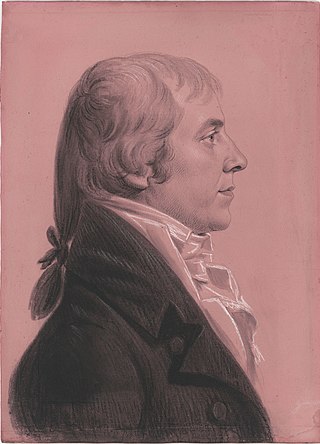
John Wickham was an American Loyalist, attorney and slaveholder. One of very few Loyalists to achieve any sort of national prominence in the United States after the American Revolution, Wickham may be best remembered for his role defending former Vice President Aaron Burr who was accused of treason but acquitted in 1807.
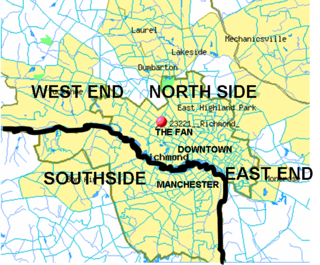
The Southside of Richmond is an area of the Metropolitan Statistical Area surrounding Richmond, Virginia. It generally includes all portions of the City of Richmond that lie south of the James River, and includes all of the former city of Manchester. Depending on context, the term "Southside of Richmond" can include some northern areas of adjacent Chesterfield County, Virginia in the Richmond-Petersburg region. With minor exceptions near Bon Air, VA, the Chippenham Parkway forms the border between Chesterfield County and the City of Richmond portions of Southside, with some news agencies using the term "South Richmond" to refer to the locations in Southside located in the city proper.

William H. Cabell was a Virginia lawyer, politician, plantation owner, and judge aligned with the Democratic-Republican party. He served as a Member of the Virginia House of Delegates, as Governor of Virginia, and as a judge on what later became the Virginia Supreme Court. Cabell adopted his middle initial in 1795—which did not stand for a name—to distinguish himself from other William Cabells, including his uncle, William Cabell Sr.
The Manchester Turnpike was a turnpike in Chesterfield County in the U.S. state of Virginia, and was the first paved or artificial roadway in that state. It stretched from Manchester west to Falling Creek near Midlothian, and is now known as Midlothian Turnpike, mostly forming part of U.S. Route 60 (US 60).

Forest Hill Park, known for its "Stone house" called Boscobel, is a historic 105-acre (0.4 km2) urban park in Richmond, Virginia. Starting as a private property, the park has had several owners and uses before its present one, the City of Richmond.

Black Heath was a house and coal mine located near the present day Midlothian area of Chesterfield County, Virginia. The Black Heath coal mining enterprises were operated intermittently from the early 1780s until 1939 and were most notably run by the Heth family from 1795 until 1840, who also built the mansion house in the early 1800s. During the early tenure of the Heths' operation, the Black Heath mines were one of the largest producers of coal in the United States and supplied coal to the White House during US President Thomas Jefferson's term. In 1840, control shifted to an English group of investors who oversaw the mines at a distance until 1888, when they were sold to another interest which soon went into trusteeship. During the 1910s or 1920s, the Black Heath house collapsed due to severe undermining from the numerous coal shafts and tunnels scattered around the property. In 1938, the Black Heath land was sold to coal mining interests who soon went into trusteeship and default like many others before them. Over the next few decades, the land sat idle until 1971, when it began to be parceled off into housing developments.

Captain John Heth was a Virginian naval officer and businessman in the coal mining industry.

Norwood is a historic plantation house located near Powhatan, Powhatan County, Virginia. It was built in the 18th century and remodeled about 1835. It is a two-story, five-bay, Federal style brick dwelling with a hipped roof. The remodeling included the addition of flanking two-story wings and a two-story rear extension. The front facade features a sheltering porch with coupled Ionic order columns, marble paving, and granite steps. Also on the property are the contributing office, plantation kitchen, and privy.

Frederick Thomas Gray was a Virginia attorney and Democratic Party politician. Governor J. Lindsay Almond appointed Gray to serve as Attorney General of Virginia after the resignation of Attorney General Albertis Harrison to run for Governor of Virginia during the Massive Resistance crisis in Virginia. Gray returned to private practice at Williams Mullen after Robert Young Button took office. Gray later served in the Virginia House of Delegates and the Virginia Senate as he continued his law practice.
Robert Porterfield, was a Virginia planter, politician, magistrate and military officer who served in the Virginia House of Delegates representing Augusta County for one term. He is better known for his service in the Virginia Line during the American Revolutionary War, and as Brigadier General led the Virginia militia during the War of 1812.


















